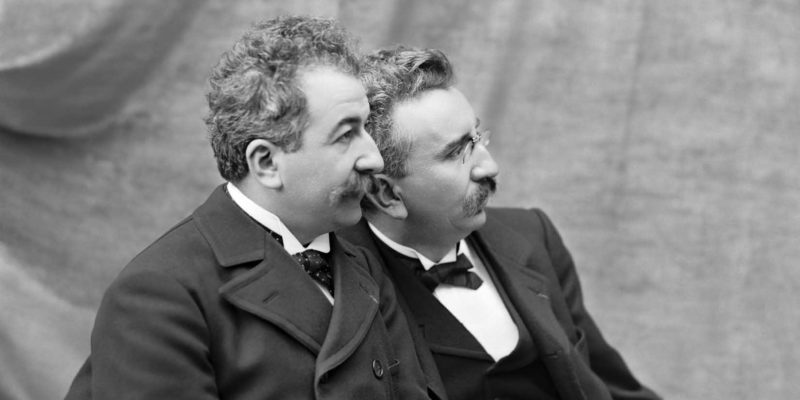We explain what the contemporary age is, its origins and its characteristics. In addition, its stages and its most important contributions
What is the Contemporary Age?
The Contemporary Age is the historical period that spans from the year 1789, with the French Revolution , to the present day . However, some consider that this period reaches up to the 20th century and call the most current period the late Modern Age , characterized by globalized societies .
For this reason, the Contemporary Age is an extensive and not yet delimited period, with numerous events, such as the consolidation of the capitalist system , industrial revolutions, technological development and the great world wars.
Historians distinguish the Ancient Age , the Middle Ages , the Modern Age and the Contemporary Age as historical periods .
Origin of the Contemporary Age

Before the Contemporary Age, during the Middle Ages, various movements and ideologies such as the Renaissance and the Enlightenment arose , which were of great influence on art , society and politics , and which imposed new humanist values such as the concept of the human rights .
This new way of thinking spread rapidly and contributed to the social and revolutionary outbreak in various societies. The French Revolution was one of the most significant and with which the period of the Contemporary Age began, in addition to several important movements such as the independence of the United States in 1776 .The beginning of the first Industrial Revolution (1760 - 1840), which began in England , represented a break with the old economic systems, promoted liberal ideas and technological development. In this way, the Contemporary Age presented a new social, political and economic structure.
The transition from the Modern to the Contemporary Age was not abrupt, but several changes occurred gradually. The warlike conflicts that occurred in the contemporary period (such as the First and Second World War) were the most destructive in history.
Characteristics of the Contemporary Age
 The Contemporary Age was characterized by:
The Contemporary Age was characterized by:
- The implementation of totalitarian governments that opposed the new ideas of freedom and human rights.
- The consolidation of the capitalist system and the bourgeoisie , in part, due to the Industrial Revolution.
- The growing economic division between the first and third world, despite decolonization that allowed the independence of several nations.
- Disputes and clashes between the European powers that unleashed unprecedented wars.
- The first influenza pandemic in 1918, also called the Spanish flu (although it did not arise in that country).
- The advancement of the United States as a world power.
- Technological development applied to communications , industrial production, health and urban development.
Stages of the Contemporary Age
The Contemporary Age is subdivided into three general stages:
- High age. It includes from the declaration of the independence of the United States in 1776 and the French Revolution in 1789, events that unleashed numerous revolutionary struggles and confrontations, until 1870. Around 1815 the confrontations decreased considerably.
- The low age. It comprises from 1870 to 1914 and it was a more peaceful stage than the previous one in terms of international relations. However, it ended abruptly with the outbreak of one of the great world wars and, from there, new confrontations unprecedented in the history of mankind were unleashed.
- The period of wars. It ranges from 1914, when one of the bloodiest events in history took place: the First World War and, later, the Second World War in 1939, until 1945 when the Cold War broke out that culminated in 1991. The iconic moment that Represents the end of the succession of wars was the fall of the Berlin Wall in 1989.
Contributions of the Contemporary Era
 The Contemporary Age was a period of great scientific advancement and discovery. Among the main contributions are:
The Contemporary Age was a period of great scientific advancement and discovery. Among the main contributions are:
- The voltaic pile. The first non-rechargeable battery that converted chemical energy into electrical energy created by the Italian physicist Alessandro Volta in 1799.
- The steamship. A ship propelled by a paddle wheel through steam machinery. It was created by the American engineer Robert Fulton in 1807.
- The steam locomotive. A mode of traction through steam to mobilize the railways created by the British engineer George Stephenson in 1826.
- The typewriter. The first machine to incorporate letters and symbols that were actuated by levers and represented in a linear fashion. It was created by French inventor Xavier Progin in 1868 and patented in 1883.
- The phone. A device that transmitted acoustic signals at a distance by means of electrical signals, created by the Italian inventor Antonio Meucci in 1854 (but it was Alexander Graham Bell who patented the invention in 1876).
- The electric lamp. A light bulb that produced light from electrical energy, created by the British physicist Joseph Swan and the American Thomas Edison in 1879.
- The rabies vaccine. A small dose of the inactive rabies virus delivered to the body, so it could not cause disease, but it could generate antibodies. It was created by the French physicist Louis Pasteur in 1885.
- The cinema . A device called a cinematograph that served both as a video camera and as a projector and with which the first filming called The departure of the workers from the Lumière factory was made. It was created by the French brothers Louis and Auguste Lumière in 1895.
- The radioactivity . The discovery of the process by which the nucleus of an atom loses energy through the emission of particles (alpha, beta or neutrons) that cause the disintegration of certain groups of protons and neutrons. It was discovered by the French scientist Antoine Henri Becquerel in 1896.
- Aspirin. The best known drug for relieving headaches and muscle pain, called acetylsalicylic acid. It was created by the German pharmacist Felix Hoffmann in 1897. Bayer Laboratories registered this active principle under the trade name "aspirin" in 1899.
- The radio . The first connection by means of a wireless radiotelegraph signal (at first it was in Morse code) between Europe and America . It was created by the Italian physicist Guillermo Marconi in 1902.
- The DNA. The discovery of the structure of the molecule responsible for inheritance, called deoxyribonucleic acid (hence its acronym DNA). It was detected by the Russian-American biochemist Phoebus Levene in 1920.
- The aircraft. The first controlled flight through a powered machine, which traveled 36 meters a few centimeters from the ground . It was created by the Wright brothers in 1903.
- Television. A system for the transmission of images and scenes, remotely and by telegraphy, which was connected through a telephone cable. It was created by British physicist and engineer John Logie Baird in 1926.
- Penicillin. The first antibiotic that is still used today to fight bacterial infections . It was discovered by the British scientist Alexander Fleming in 1928.
- Computer. The first machine capable of being programmed. It was called Z1 and it was a large, electrically powered binary mechanical calculator . It was created by the German engineer Konrad Zuse in 1936.
- International organizations. Groupings between different countries in order to defend democratic freedom. They were created the United Nations (UN its acronym in English) in 1945 and the Organization of the North Atlantic Treaty in 1949.
- The artificial satellite. The first artificial satellite successfully sent into space and kept in orbit, called Sputnik I. It was a joint work carried out by Russian scientists in 1957.
- Heart transplantation . The first operation in which the heart of a chimpanzee was transplanted into a human. After the operation was over, the heart kept beating for 90 minutes before stopping. It was performed by the medical team led by American doctor James Hardy in 1964.
- Arrival to the Moon . The first time that the human being arrived at the natural satellite , the Moon , aboard the Apollo 11 spacecraft in which three North American crew members traveled. Astronaut Neil Armstrong was the first man to set foot on the lunar surface in 1969.
- The compact disc. An optical disc capable of storing data in digital format. Its popular name was the acronym CD that derived from its name in English compact disc. It was created by the American physicist James Russell who patented it in 1966, although it was not released until 1982.
- Dolly the sheep. The first cloning of a mammal from a single stem cell. It was created in a laboratory through the work of Scottish Roslin Institute scientists Ian Wilmut and Keith Campbell in 1997.
The above content published at Collaborative Research Group is for informational and educational purposes only and has been developed by referring reliable sources and recommendations from technology experts. We do not have any contact with official entities nor do we intend to replace the information that they emit.
Abubakr Conner brings a diverse skill set to our team, and covers everything from analysis to the culture of food and drink. He Believes: "Education is the most powerful weapon that exists to change the world." .
Leave a reply
Your email address will not be published. Required fields are marked *Recent post

25 Best Synonyms and Another Word for IDENTIFY
